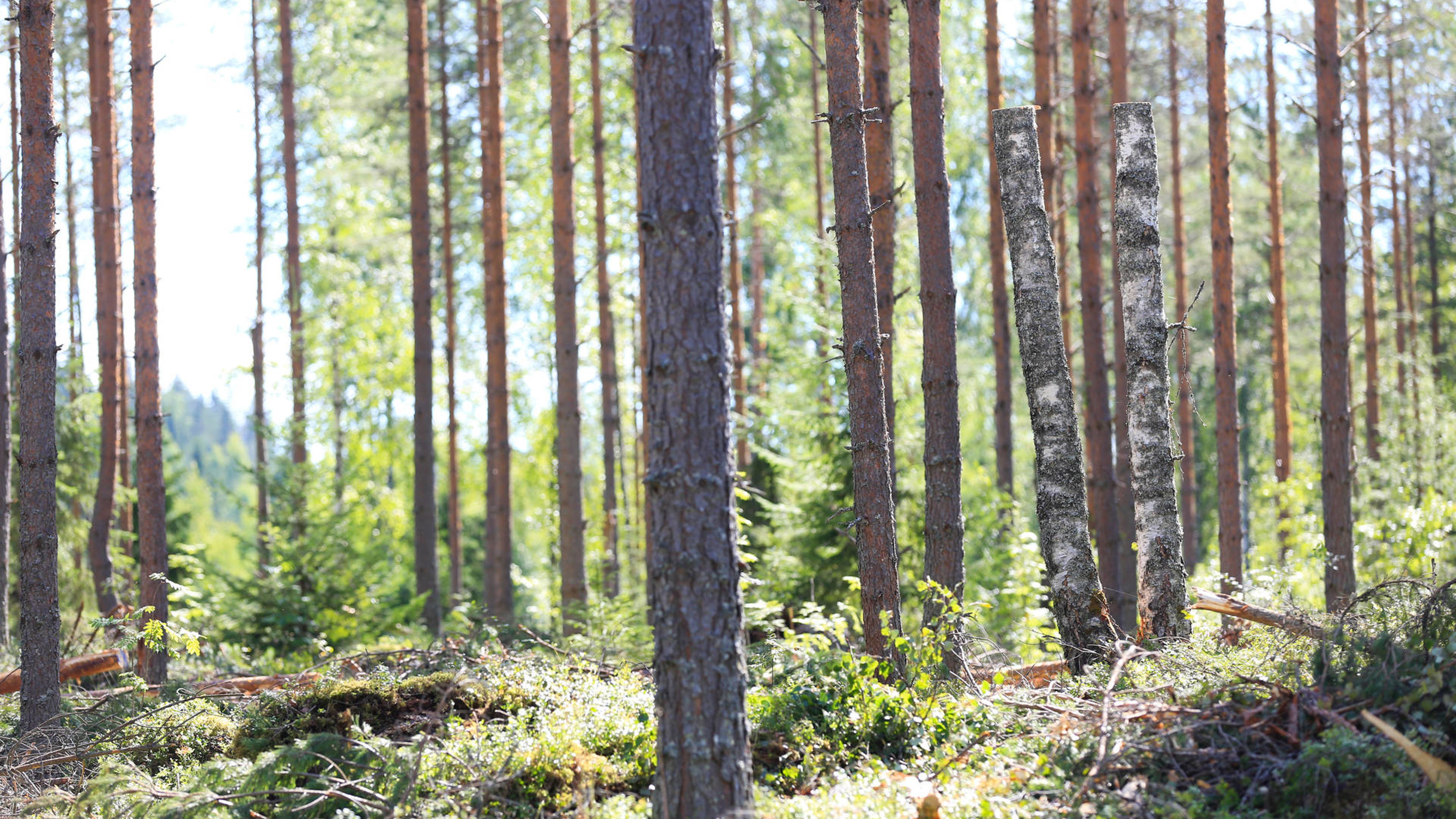On one of my field trips this spring, I came across a regeneration area felled two years ago containing two high stumps made from sturdy aspens. Usually the area around sturdy aspens, particularly felled aspens, is dominated by aspen's root sprouts. Around these two high stumps roughly five metres tall, however, there was not a lot of root sprouts to be seen.
Was this an isolated case, or are we talking about a more widespread phenomenon? Unfortunately, aspen high stumps are, for now, so rare that finding any measured data on the subject is unlikely. It would therefore be interesting to know whether anyone else has any observations in line with or contrary to mine on this subject.
High stumps are one voluntary way of considering forests' environmental values in the forest industry. They have often been called ugly and unnecessary. High stumps nevertheless provide us with decaying standing wood that do not usually appear in forests as a result of windfall. The humidity of a decaying standing stump varies at different heights, thereby providing the species living in the dead tree with very diverse conditions. High stumps also make natural nesting spots for hole-nesting species.
Decaying and retention trees are a central aspect of forest certification, the criteria of which a forest owner undertakes to fulfil when joining a certification scheme. After all, certification is the very thing with which we demonstrate to the customers that our raw material comes from well-managed forests, in which the forest's other values are also taken into account.
In Finland, the renewed PEFC criteria took effect at the beginning of this year. Their up-to-datedness is reviewed periodically and the criteria adjusted according to increased knowledge or needs. In this review, the minimum amount of retention trees increased. What is new in terms of the retention tree issue is that the criteria also applies to intermediate felling. It is therefore important to retain old trees, tree species mixture and decaying wood in the operations carried out even in growing stocks, to secure the continuous presence of decaying wood.
During my field trips and spare time spent on walks in the surrounding environment, I've noticed that the contrast between forest use and the other values of forests often brought up in public debate is not as great as it is often made out to be. For us Finns, the forest is very naturally a place that provides us with relaxation in its various forms, in addition to the economic benefit. Finland's small-scale forest owners and their diverse goals create versatile conditions and diversity within our forests. When you know a forest, you also think it is important to retain the wonderful destinations therein – such as brooks, springs and groves.
When planning and carrying out operations, the good quality of the work is also important for those of us doing it. Not once during my career have I come across a forest professional who claimed that they had chosen our industry to have the chance to destroy biodiversity. Rather, the most common motives seem to have been a nature-related hobby begun in childhood and the enjoyment of the outdoors. This starting point also provides a natural basis for the exercise of sustainable forest industry. The continuous development and improvement of methods must nevertheless be kept in mind at all times.
Janne Soimasuo
Evironmental Manager
Metsä Group






